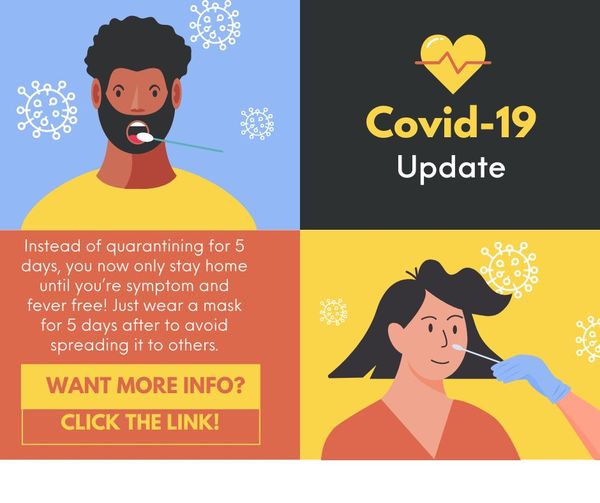 Exciting News for Downtown Warrenton! Coming soon to 35 Depot Street, Warrenton, GA – your new favorite spot! Get ready to indulge in a mouth-watering menu featuring: pizza, gyros, wings, paninis, ribs, and much more! Stay tuned for the grand opening details. Warrenton, they can't wait to serve you! Want to get updates on opening, etc.? Follow our Facebook page for the latest 411!
0 Comments
 Exciting Business Opportunity at 459 Main St, Warrenton, GA! Are you dreaming of opening your own business? This might be the perfect spot for you! We are offering a unique space at 459 Main Street in the heart of Warrenton, GA, ideal for various business types. Whether you envision a cozy café, a trendy boutique, a buzzing office space, or something entirely different, we want to hear from you! Check the building out on YouTube: https://www.youtube.com/watch?v=LAua2rPmAKk Provided by: Jasmin Bradley - Keller Williams Realty Augusta Partners Features of the location include: • Prime location in Warrenton’s vibrant community • Flexible space, adaptable to a variety of business types • Supportive environment for new and growing businesses Don’t miss this chance to turn your business dream into reality! We are eager to partner with entrepreneurs who are passionate about bringing new energy and services to our community. Interested? Let’s connect! Fill out our short form https://forms.office.com/r/vWYVVdkyZr to get started. Tell us about your business idea, and let’s explore how we can make it happen at 459 Main St. #WarrentonGA #BusinessOpportunity #Entrepreneurship #MainSt • 𝘗𝘰𝘴𝘵𝘦𝘥 𝘰𝘯 𝘣𝘦𝘩𝘢𝘭𝘧 𝘰𝘧 𝘵𝘩𝘦 𝘣𝘶𝘴𝘪𝘯𝘦𝘴𝘴 𝘰𝘸𝘯𝘦𝘳  Join us in welcoming Hoss Climate Controlled Self Storage to the Warren County Chamber Family! Address: 92 Macon Hwy, Warrenton, GA 30828 Phone: (706) 901-7334 Website: www.HossWarrenton.com Hoss Climate Controlled Self Storage offers top-notch storage solutions for our community. With low monthly rates, 24-hour access, and surveillance, they provide peace of mind for your belongings. Their garage-style roll-up doors make moving large items a breeze! Plus, take advantage of their current Spring Sale: Book online today and get your 3rd month FREE! This offer is valid on new rentals from February 15th to May 31st. Call (706) 901-7334 to learn more! Welcome aboard, Hoss Climate Controlled Self Storage! Ribbon Cutting Ceremony-April 26th |12:00 PM 92 Macon Highway, Warrenton, GA 30828  The installment of Peace Poles has been completed at the Depot Welcome Center. We would love to plant more...all over town! The Warrenton Garden Club & Hometown Warrenton, Inc. invite you to participate by creating an inspirational "monument" for peace. For more info: https://www.HometownWarrenton.org 46 South Norwood Street, Warrenton, GA 30828 (706) 465-9604 Info@HometownWarrenton.org MONDAY - FRIDAY | 10AM TO 4PM  ATTENTION! Four years ago, a virus with no name took the world by storm and gave us a series of lockdowns, medicines, and facial coverings. It changed our society. Many other respiratory viruses (flu, etc.) have comingled with COVID-19 and become difficult to identify due to many similar symptoms. As of March 1, the CDC has put the newest update out the public-click the link below to learn more about the new quarantine protocol. https://www.cdc.gov/.../2024/p0301-respiratory-virus.htm Flyer Courtesy: Warren County Health Department  Attention PreK-12th School Teachers! Apply today for a $500 Grant from the National Agriculture in the Classroom! Enhance your classroom with resources and materials to boost agricultural literacy efforts. Apply by April 15, 2024 at the link below! http://agclassroom.org/teacher/grants Article & Flyer Courtesy of : Farm Bureau-Warren County  The event was attended by members from various esteemed organizations, including Asama Coldwater Manufacturing, Area Children's Theatre, Forest and Land Services, Warren County Probate Court, Warren County School System, City of Warrenton, Alexandria Development, Warren County Board of Commissioners, Warren County Sheriff's Office, Family Connections of Warren County, Warrenton Housing Authority, and Warren County Farm Bureau. We also acknowledge those who were engaged remotely: Warren County Tax Commissioner, City of Warrenton, Warren County E-911, and Warrenton Finance Company. They were with us in spirit as business does not allow everyone the opportunity to get away. A special acknowledgment goes to the Warrenton Country Store and Deli for their excellent catering service and Community Healthcare Systems for providing a distinguished speaker. Dr. Morgan Stinson, Ph.D., LMFT, CCTP, the Behavioral Health Director, delivered an enlightening speech filled with valuable data, compelling stories, and illustrative examples. For those interested in further discussion or in need of resources, Dr. Stinson is available via email at morgan.stinson@chcsga.org. Congratulations are in order for our Staff Professional of the Year, Amanda Wilkerson. We extend our best wishes to her for safe travels to the game today. We would also like to take a moment to express our profound appreciation for Congressman Rick Allen's visit. His presence underscored the significance of our event, and we are deeply thankful for his support and the opportunity to engage with him directly  Welcoming Rodgers' Cleaning to Our Family! February 22, 2024 The Warren County Chamber of Commerce is thrilled to announce a sparkling new addition to our community: Rodgers' Cleaning! Founded in 2016 in Thomson, GA, this fantastic locally-owned business led by Kimberly Rodgers brings a whole new level of clean to Warren County. By joining the Warren County Chamber of Commerce, Rodgers' Cleaning is making an inspiring move to deepen their local connections and participate more actively in our region's growth. This partnership symbolizes our shared goal: to support local businesses and fuel economic prosperity in our beloved community. To learn more about Rodgers' Cleaning and the fantastic services they offer, give them a call at 706-699-3114 or check out their Facebook page at Rodgers' Cleaning. Lets give them a warm welcome!!  Attention all students and parents! Protect yourself and your loved ones from the serious threat of meningitis by getting vaccinated TODAY. Don't wait until it's too late to prevent this deadly disease. Take action now to stay healthy and safe! Article Courtesy: Warren County Health Department, 565 Legion Drive, Warrenton, GA 30828 |
AuthorWarren County Chamber Archives
April 2024
Categories |
|
Website is home to the Warren County Chamber of Commerce, Hometown Warrenton, Warren County Development Authority, and Warren County Government.
|
ORGANIZATIONS |
QUICK LINKS |
CONTACT US |
